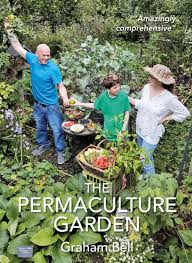Introduction to Permaculture Gardens
Imagine stepping into a lush, vibrant garden where every plant serves a purpose and nature thrives in harmony. This isn’t just any ordinary garden; it’s a permaculture garden, designed with sustainability at its core. As the world increasingly seeks solutions to environmental challenges, more people are turning to permaculture as a way of life.
Permaculture gardens not only enhance our surroundings but also offer numerous benefits that align perfectly with sustainable living practices. From reducing waste to improving food security and promoting biodiversity, these innovative gardens have much to offer. Let’s explore what makes permaculture so special and how it can transform not just your backyard but your entire lifestyle.
Principles of Permaculture Design
Permaculture design revolves around a few guiding principles that create sustainable ecosystems. These principles stem from observing natural systems and applying those observations to agricultural practices.
One key principle is the concept of “working with nature.” Instead of battling pests or weeds, permaculture advocates for building biodiversity. This encourages natural predators and reduces the need for chemical interventions.
Another vital aspect is the integration of elements within a garden. Plants, animals, and even structures work together symbiotically. For instance, planting nitrogen-fixing legumes alongside other crops enriches the soil naturally.
Zone planning optimizes space in a permaculture garden. By placing high-maintenance plants closer to your home, you save energy while making care more convenient.
Embracing diversity enhances resilience. A variety of species fosters a robust ecosystem capable of recovering from disturbances better than monoculture farms ever could.
Environmental Benefits of Permaculture Gardens
Permaculture gardens offer a powerful way to enhance our environment. They promote biodiversity by creating habitats for various species. This diversity helps maintain the balance of local ecosystems.
Soil health is another significant advantage. By using organic practices, these gardens improve soil structure and fertility over time. Healthier soil means better water retention, reducing the need for irrigation.
Water management also takes center stage in permaculture design. Techniques like swales or rain gardens capture runoff and naturally filter it before it enters waterways.
Additionally, permaculture reduces reliance on chemical fertilizers and pesticides. This leads to less pollution in nearby streams and rivers, fostering cleaner habitats for aquatic life.
These gardens act as carbon sinks too—capturing CO2 from the atmosphere and helping combat climate change while providing food security to communities around them.
Economic Benefits of Permaculture Gardens
Permaculture gardens offer compelling economic advantages that resonate with sustainable living enthusiasts. By cultivating your own food, you can significantly reduce grocery bills. Fresh produce from your garden is not only healthier but also more cost-effective than store-bought options.
These gardens require minimal investment and maintenance in the long run. Once established, a permaculture garden becomes self-sustaining, lowering ongoing expenses related to fertilizers and pesticides.
Additionally, permaculture practices enhance soil health and biodiversity, improving crop yields over time. This resilience allows for better harvests even during adverse weather conditions.
Many gardeners find they can share or sell surplus produce at local markets. This creates additional income streams while fostering community connections.
Investing in a permaculture garden means embracing a lifestyle that supports both personal finances and environmental sustainability simultaneously.
Health Benefits of Permaculture Gardens
Permaculture gardens offer numerous health benefits that extend beyond just physical wellness. By growing your own food, you gain access to fresh, organic produce free from harmful pesticides and chemicals.
This leads to a healthier diet rich in nutrients. Eating seasonal fruits and vegetables helps boost immunity and improve overall vitality.
Spending time in a permaculture garden can also reduce stress levels. The act of gardening itself is therapeutic, promoting mindfulness as you connect with nature.
Additionally, engaging in regular gardening activities provides physical exercise without the monotony of traditional workouts. Digging, planting, weeding—these tasks enhance strength and flexibility while keeping you active.
Community involvement is another aspect worth mentioning. Participating in local permaculture projects fosters social connections and promotes mental well-being through shared experiences and collaboration.
How to Create a Permaculture Garden
Creating a permaculture garden starts with observing your space. Take note of sunlight patterns, wind directions, and water drainage. Understanding these factors will guide your design.
Next, sketch a layout that incorporates zones. Position frequently used plants closer to your home for easy access. Consider companion planting; certain plants thrive when grown together.
Soil health is crucial. Build rich soil through composting organic materials like kitchen scraps and yard waste. This enhances fertility naturally without chemical inputs.
Choose native plants adapted to your local climate as they require less maintenance and support local wildlife. Incorporate perennials alongside annuals for year-round harvests.
Implement water conservation techniques such as rain gardens or swales to manage runoff effectively while nurturing plant growth. Each step contributes to the resilience of your ecosystem, making it both sustainable and productive at the same time!
Tips for Maintaining a Permaculture Garden
Maintaining a permaculture garden requires observation and adaptation. Regularly check the health of your plants. Look for signs of pests or disease early on, so you can take action quickly.
Mulching is essential to retain moisture and suppress weeds. Use organic materials like straw or wood chips around your plants to create a protective barrier.
Encourage biodiversity by planting various species together. This helps establish natural pest control and promotes healthier ecosystems.
Water management is crucial too. Install rain barrels to collect water during rainy seasons, then use it wisely throughout drier times.
Regularly rotate crops in different sections of your garden to enhance soil fertility and reduce the risk of diseases spreading among similar plants.
Keep learning! Engage with local gardening communities online or attend workshops to share experiences and gather new ideas for sustainable practices.
Conclusion
Creating a permaculture garden can transform your approach to sustainable living. Embracing the principles of permaculture not only fosters environmental stewardship but also enhances economic resilience and personal health.
The integration of natural systems leads to lush, productive gardens that require less input over time while providing an abundance of food, habitat for wildlife, and a sanctuary for you and your family.
By investing in this holistic gardening method, you’re making a commitment to sustainability that reaches far beyond your immediate surroundings. The benefits ripple out into the community and ultimately contribute to a healthier planet.
Whether you’re just starting out or looking to enhance your existing garden space, adopting permaculture principles can pave the way toward a more sustainable lifestyle filled with rewards on multiple levels. Engaging with nature in this way enriches not only our lives but also supports future generations by nurturing the ecosystems we depend upon.




